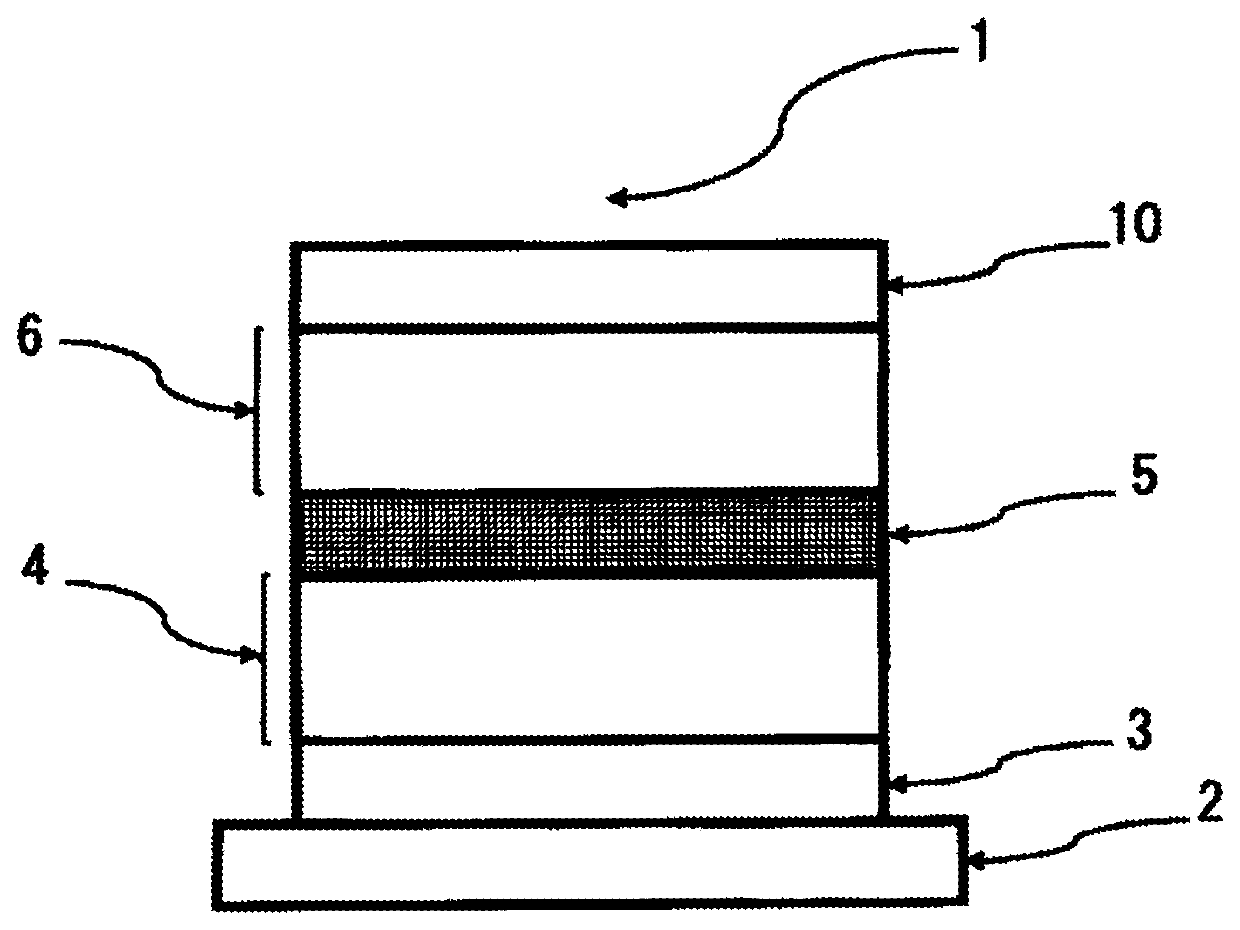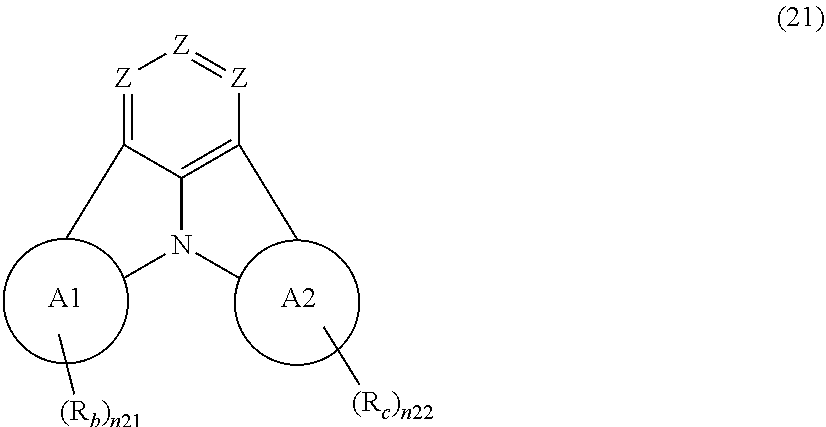Organic electroluminescence device and electronic apparatus using the same
- Summary
- Abstract
- Description
- Claims
- Application Information
AI Technical Summary
Benefits of technology
Problems solved by technology
Method used
Image
Examples
example 1
(Fabrication of Organic EL Device)
[0656]A 25 mm×75 mm×1.1 mm-thick glass substrate with an ITO transparent electrode (anode) (manufactured by GEOMATEC Co., Ltd.) was subjected to ultrasonic cleaning in isopropyl alcohol for 5 minutes, and then subjected to UV-ozone cleaning for 30 minutes. The thickness of the ITO film was 130 nm.
[0657]The glass substrate with the transparent electrode after being cleaned was mounted onto a substrate holder in a vacuum vapor deposition apparatus. First, a compound HI was deposited on a surface on the side on which the transparent electrode was formed so as to cover the transparent electrode to form an HI film having a thickness of 5 nm. This HI film functions as a hole-injecting layer.
[0658]A compound HT was deposited on the HI film to form an HT film having a thickness of 90 nm. This HT film functions as a hole-transporting layer (hereinafter, also referred to as an HT layer).
[0659]On this HT film, a compound BH (host material) and a compound BD-2 ...
example 37
[0673]The organic EL device was fabricated and evaluated in the same manner as in Example 1 except that the compounds shown in Table 3 were used as materials of the emitting layer, the first electron-transporting layer, and the second electron-transporting layer.
[0674]The second electron-transporting layer was formed by co-depositing a compound ET-2 and compound (8-quinolinolato)lithium (hereinafter, also referred to as Liq) so that the proportion of the compound Liq became 50% by mass to form an ET-2:Liq film having a thickness of 15 nm.
[0675]The layer structure of the obtained organic EL device is as follows. ITO(130) / HI(5) / HT(90) / BH:BD-1(25:4% by weight) / ET-A(10) / ET-2:Liq(15:50% by mass) / LiF(1) / Al(80)
[0676]Numerical values in parentheses indicate film thickness (unit: nm).
[0677]LT95 (unit: hours) of the obtained organic EL device was measured. Results are shown in Table 3.
example 42
(Fabrication of Organic EL Device)
[0681]A 25 mm×75 mm×1.1 mm-thick glass substrate with an ITO transparent electrode (anode) (manufactured by GEOMATEC Co., Ltd.) was subjected to ultrasonic cleaning in isopropyl alcohol for 5 minutes, and then subjected to UV-ozone cleaning for 30 minutes. The thickness of the ITO film was 130 nm.
[0682]The glass substrate with the transparent electrode after being cleaned was mounted onto a substrate holder in a vacuum vapor deposition apparatus. First, a compound HI was deposited on a surface on the side on which the transparent electrode was formed so as to cover the transparent electrode to form an HI film having a thickness of 5 nm. This HI film functions as a hole-injecting layer.
[0683]On this HI film, a compound HT was deposited to form an HT film having a thickness of 80 nm. This HT film functions as a hole-transporting layer (hereinafter, also referred to as an HT layer).
[0684]On this HT film, a compound HT-1 was deposited to form an HT-1 fi...
PUM
 Login to View More
Login to View More Abstract
Description
Claims
Application Information
 Login to View More
Login to View More - R&D
- Intellectual Property
- Life Sciences
- Materials
- Tech Scout
- Unparalleled Data Quality
- Higher Quality Content
- 60% Fewer Hallucinations
Browse by: Latest US Patents, China's latest patents, Technical Efficacy Thesaurus, Application Domain, Technology Topic, Popular Technical Reports.
© 2025 PatSnap. All rights reserved.Legal|Privacy policy|Modern Slavery Act Transparency Statement|Sitemap|About US| Contact US: help@patsnap.com



